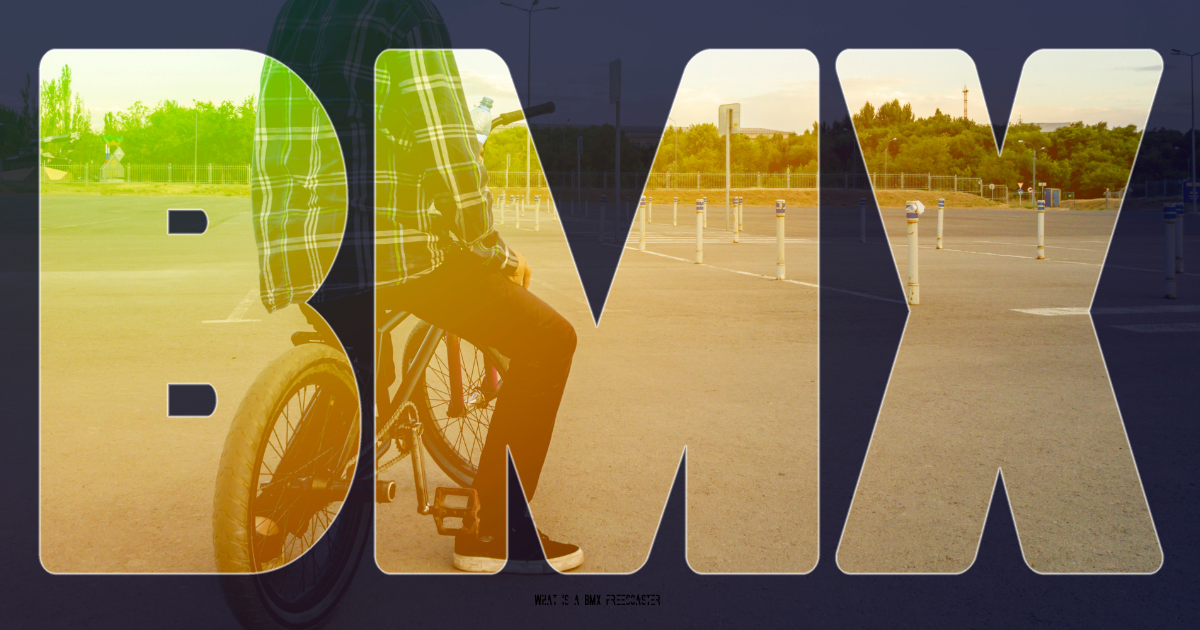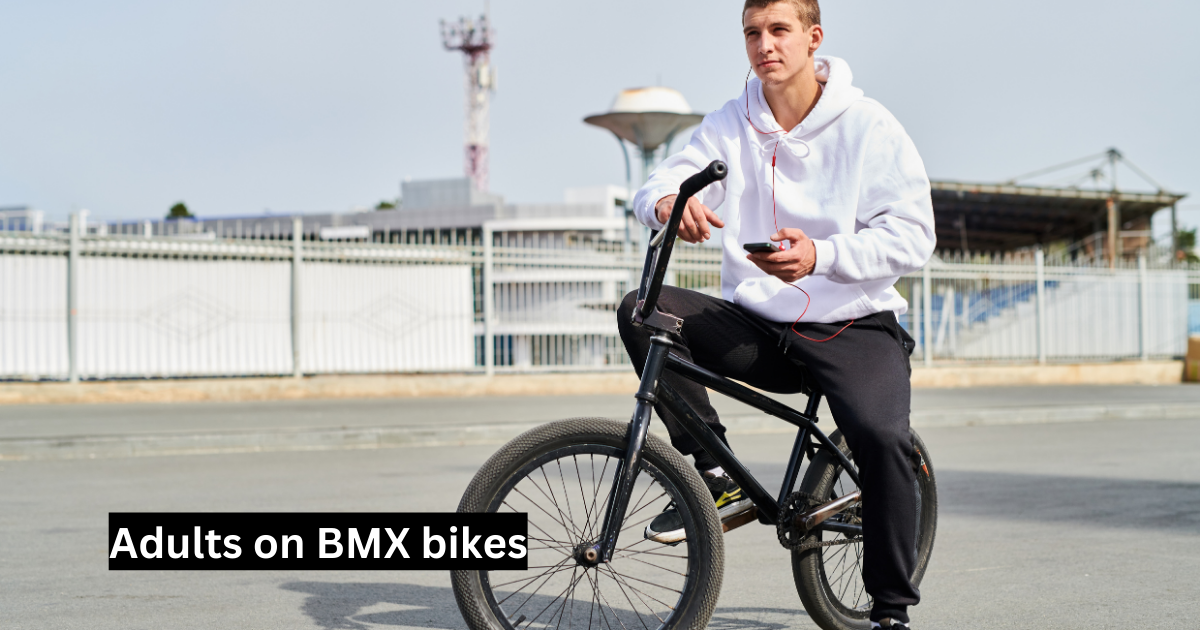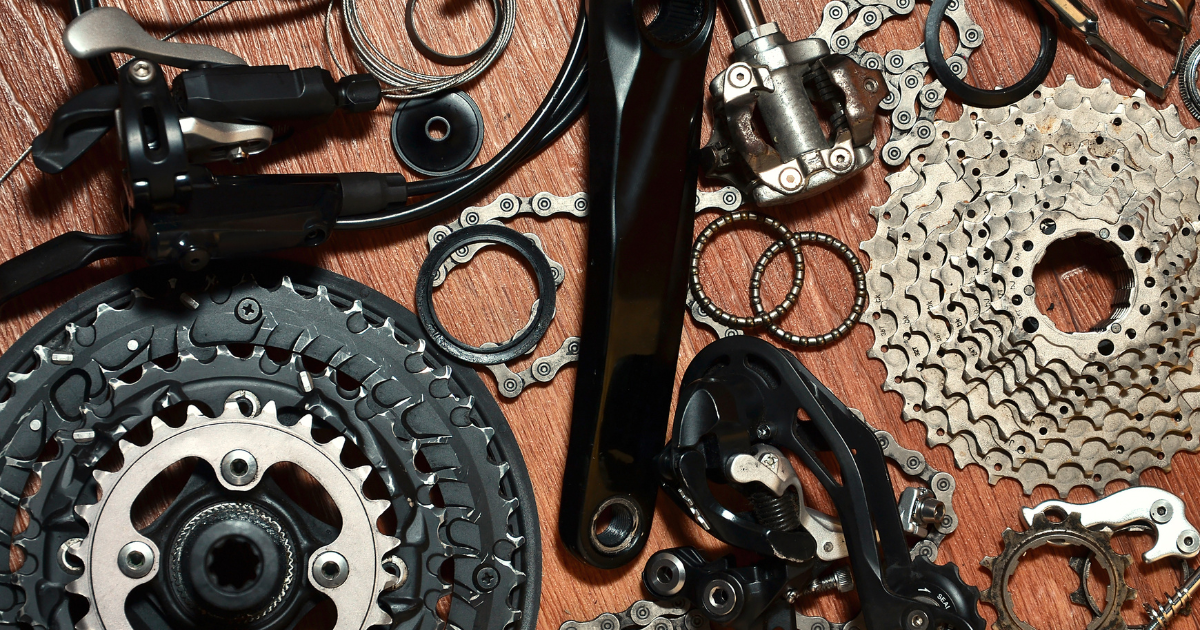BMX riding is an exhilarating sport that has captivated people around the world. From casual enthusiasts to professional athletes, the surge of adrenaline felt while riding is incomparable. Mastering tricks, especially the art of BMX manual, takes the enjoyment of the sport to a whole new level. In this article, we are going to share valuable knowledge on how to perform a manual on a BMX bike for our thrill-seeking readers.
“The manual is an essential technique in BMX riding, serving both style and practical purposes. It allows riders to maneuver through different terrains with balance, control, and precision, going beyond simply lifting the front wheel.”
– A well-experienced BMX rider
Before we get into the details of how to perform a manual on a BMX bike, it’s important to understand what exactly a manual is. For those who are new to the world of BMX, a manual refers to a trick where the rider balances on the rear wheel of the bike without pedaling, while lifting the front wheel off the ground. To maintain balance during this trick, riders adjust their body weight and make subtle movements with their handlebars. While defining a manual may seem straightforward, executing it is far from easy. It requires patience, practice, and perseverance in order to truly master this skill.
- Determine Your Comfortable Foot
- Practice Lifting Your Front Wheel
- Master the Art of Balance
- Start Manualing on Flat Surface
- Experiment with Different Terrains
Mastering the Manual: Essential Tips and Techniques
Becoming proficient in the manual maneuver on a BMX bike requires dedication and patience, but it’s definitely achievable. This versatile move not only enhances your style but also unlocks numerous advanced tricks while providing better control over your ride. To assist you in mastering this foundational trick, here are some crucial tips and techniques to follow.
Mastering the manual trick in biking requires understanding its dynamics. The term “manual” refers to riding on the rear wheel without pedaling, using your balance to keep the front wheel off the ground. By grasping this concept, you can take the first step towards achieving mastery in this trick.
Begin with a small step: Practice lifting the front wheel slightly off the ground. As you advance, try to keep it suspended for longer periods of time. Remember, this skill is all about balance, not strength.
One common misconception about using manuals is relying on arm strength. Instead, it’s important to use your hips to generate the necessary force while keeping your arms steady on the handlebars.
Mastering the manual on a bicycle hinges on finding the balance point. This is the sweet spot where you can keep your front wheel up without losing balance or tipping over.
Consistent practice is essential for mastering any skill. Just like Rome wasn’t built in a day, becoming proficient in a manual task takes time and patience. Take it one step at a time and make sure to practice regularly.
Bike Setup: Make sure your bike is set up correctly. Adjust the seat so that it allows for a wide range of motion, and ensure that your tire pressure is appropriate for your weight and comfort level.
When it comes to bike manuals, it’s all about finding that perfect balance, mastering your body positioning, and maintaining control of the bike. Take it slow at first, really understanding how the dynamics work. Gradually increase your speed and difficulty level as you get more comfortable. And most importantly, remember
Developing Core Strength: A Key to Successful Manual BMX
To execute a BMX manual successfully, it’s crucial to have not only skill and balance but also strong core muscles. Your core acts as the keystone of a bridge, supporting your position on the rear wheel of your BMX bike for extended periods. Without a strong core, the whole structure – your balance and control – will collapse.
So, how does core strength impact manualing? When you’re in a manual position, your upper body and hips are aligned with the rear wheel. This is a delicate balance that relies on subtle adjustments from your core muscles. Think of your body as a tightrope walker’s pole, where your core acts as the balancer to keep you steady and prevent you from falling over.
The Core Strength Workout Regimen
- Planks are a classic core strength exercise that is popular among BMX riders. They effectively engage the entire core, helping to build endurance and stability.
- Crunches: This ab workout targets the muscles that stabilize your body while you’re standing on a bike without training wheels.
- Russian twists are a great exercise for targeting the obliques, which help with maintaining balance and stability. To perform this exercise correctly, remember to keep your back straight throughout the movement to maximize its benefits.
- Hip bridges are a great exercise for strengthening your lower back and glutes, which can be beneficial for improving control while riding a bike.
When engaging in core strength workouts, it’s important to take care and avoid straining your muscles. It’s recommended to supplement these exercises with cardio and overall body strength training. This combination will help build stamina and power, which are essential for successfully executing smooth and enduring movements.
While you may be eager to get out and ride BMX parks and trails, it’s important to prioritize regular core workouts in your weekly routine. By dedicating just two days a week to strengthening your core, you can greatly enhance your manual skills and overall performance on the BMX bike. A strong core acts as a reliable guardian of balance, much like a dedicated secret service agent.
Finding the Right Bike: Choosing the Perfect Manual Companion
Choosing the right bike is crucial for mastering manual BMX. Just like a musician needs the right instrument to perform a symphony, your bike becomes an extension of your body during manual tricks. By optimizing the fit of your bike, you can greatly improve your performance.
Size Matters
When choosing a BMX bike, it’s crucial to consider the size that best suits your height and style. Opting for a bike that fits correctly will provide you with an agile and responsive partner for executing manuals. While a smaller bike may offer better maneuverability and be suitable for technical tricks like manuals, it’s essential to strike a balance that doesn’t compromise your comfort and mobility.
Getting the Right Geometry
The geometry of your BMX bike plays a crucial role in how it handles, especially when you’re shifting your weight around during a manual. It’s important to pay attention to factors such as the length of the top tube, the angle of the head tube, and the height of the bottom bracket. These elements significantly impact the bike’s balance and control – essential qualities for successfully executing a manual.
Select a Light Frame, Yet Durable
The weight of your bike is an important factor in manual techniques. A lighter BMX bike allows for more agility and finesse when maneuvering, but it’s crucial not to sacrifice durability. Many riders prefer frames made from chromoly, a lightweight yet resilient material.
Don’t Overlook Tire Pressure
Having the optimal tire pressure is crucial for maintaining control and balance during a manual trick. It’s often a factor that gets overlooked, but it can significantly impact your performance. Slightly softer tires provide more grip and control, particularly on smoother surfaces. However, finding the right balance is key – if the tires are too soft, they may absorb your lifting force and hinder your ability to execute a successful manual.
In conclusion, choosing the ideal bike requires a thorough assessment of personal preferences along with a solid grasp of BMX bike mechanics. Once you find your ideal partner for executing tricks like manuals, the journey of learning and mastering becomes smoother and much more enjoyable.
Step-by-Step Guide: Learning the Manual from Scratch
Get ready for the exciting world of BMX biking! If you’re eager to master the manual, prepare yourself for a thrilling adventure. The manual is a popular trick among BMX riders and mastering it is essential. Without this skill, you’ll feel like a pirate without a ship, sailing through the BMX sea incomplete. So, let’s begin your journey towards conquering this trick step by step:
- Positioning: To start, straddle your bike with your feet flat on the ground. Hold onto the handlebars with a relaxed grip, being careful not to hold too tightly and compromise your control over the bike.
- Balancing: When riding your bike, start by gently applying pressure to the pedals. Maintain a moderate speed – not too slow that you risk coming to a stop, but also not too fast that you might lose control. The key is finding your balance, so keep your weight centered.
- Repositioning: While cruising, begin shifting your weight. Lean back slightly to lift the front wheel off the ground. At the same time, smoothly pull up on the handlebars, making sure this movement flows with your backward lean.
- To elevate the front wheel, focus on pulling your body weight back while keeping your arms straight but not stiff. This transferring of momentum will guide the front wheel off the ground even further. Mastering this technique is crucial for successfully performing a manual.
- Balancing on the Rear Wheel: Now, shift your weight to the rear wheel so that your front wheel is off the ground. Lock your arms and legs in this position, maintaining balance for as long as possible. This is called a manual!
- Dismounting: To gracefully complete your manual, gently lean forward and allow the front wheel to touch the ground. Take your time with this step to maintain a smooth and controlled dismount.
Remember that mastering any trick or skill, including those taught in this manual, requires practice. Take your time, keep trying, and most importantly, enjoy every step of your BMX journey!
Progressing to Advanced Techniques: Manual Variations and Combos
Congratulations! You’ve already learned the fundamentals of the manual, and now it’s time to take your skills to the next level. How exciting! With a sense of adventure and determination, we’ll explore more advanced techniques that will elevate your manual repertoire and leave a lasting impression on your audience.
The versatility of the manual BMX trick lies in its power and beauty. Once you have mastered the basic manual, you can explore a whole world of variations and combinations to elevate your skills. The manual is not just a simple trick; it serves as the foundation for an array of dazzling BMX stunts that you can build upon.
The Manual 180
The Manual 180 is a more challenging version of the standard manual trick that demands great balance and intense focus. To perform this variation, you need to swiftly rotate during the manual, executing a 180-degree turn before landing back on the ground. Start by practicing your spin without attempting the manual first. Once you feel comfortable with the rotation, incorporate it into your manual for a more advanced trick.
Manual to Nose Manual
The Nose Manual is an impressive and crowd-pleasing trick that challenges riders to shift their balance from the rear wheel to the front wheel while maintaining speed and momentum. This move requires exceptional balance, agility, and control. However, mastering it pays off with a memorable showcase of skill.
Manual Combos
Performing manual combos in skateboarding requires linking together different tricks while maintaining a manual. This can include combinations of spinning, jumping, and skids. The potential for creativity and adventure with manual combos is boundless. Above all, remember to have fun!
As you venture into these advanced tricks, it’s important to take a gradual and step-by-step approach. Rushing your progress can compromise safety, so always prioritize that. Remember, “Rome wasn’t built in a day,” and the same goes for developing your BMX skills. So, make sure to wear your helmet and pads, keep practicing, and little by little, you’ll unlock an exhilarating world of manual tricks and techniques in BMX riding.
How do I do a manual on a BMX bike?
Great! Performing an ollie is an exciting maneuver that not only looks impressive but also serves as the building block for many advanced skateboarding tricks. Here are some straightforward steps to help you get started:
- Begin with some momentum: Start pedaling at a moderate speed. You don’t want to go too fast, but you should have enough forward motion on the bike while balancing on the rear wheel.
- Position your body: Stand up on the pedals and slightly bend your knees. Make sure your body weight is centered over the bike.
- Lifting the front wheel requires a specific technique. To do this, shift your weight backward while simultaneously pulling up on the handlebars. The goal is to raise the front wheel off the ground. Remember, it’s important to focus on moving your body backwards rather than just pulling the handlebars towards you.
- Once you’ve lifted the front wheel, your next objective is to find the balance point. This is when both your body and the bike are in equilibrium on the rear wheel, requiring no pedaling or braking to maintain stability.
- Controlling the manual: When you find the balance point, you can control the manual by using your body weight. If the front wheel begins to fall, lean back more. If it rises too high, shift your weight forward. Keeping your knees slightly bent will enable you to make quick adjustments.
- Practicing: Mastering the manual requires consistent practice. Set aside time each day to focus on lifting your front wheel and finding the balance point. As you continue practicing, you’ll notice that your ability to hold a manual improves, allowing you to cover longer distances.
It is crucial to prioritize safety when engaging in any activity. Make sure to wear a helmet and proper protective gear while practicing. Additionally, it’s advisable to begin practicing manuals on a flat and smooth surface. With dedication and practice, you will be able to master this impressive skill and add it to your repertoire of BMX tricks.
What are some common mistakes when learning how to manual on a BMX bike?
As you’re learning the ins and outs of performing a manual on a BMX, it’s not uncommon to encounter a few obstacles along the way. Many beginners in BMX often make similar mistakes when striving to master this skill. But fret not – with a bit of awareness, these hurdles are easily overcome. So, let’s examine some of the most prevalent errors:
- Failing to Engage the Core: One common mistake that beginner riders often make when attempting a manual is underestimating the importance of core strength. Many rookies tend to rely solely on their arms and legs, resulting in short and unstable manuals. It’s crucial to fully engage your core muscles to establish a stable balance point during this maneuver.
- One common mistake is incorrect body position. To execute a proper manual, it’s important to maintain the right stance. This means keeping your arms straight and slightly leaning your body backward. Beginners often make the error of pulling up on the bike with their arms too much or maintaining an overly upright posture. Both of these mistakes make it more challenging to perform a manual correctly.
- Misplaced Weight: One common mistake is putting too much weight on the rear of the bike, which can create a sensation of almost tipping over backward. It’s important to find the right balance and distribute your weight correctly.
- Inconsistent practice can hinder your progress when it comes to mastering a skill like following manuals. It’s important to set aside regular dedicated time to practice in order to improve effectively.
To improve your manual skills on a BMX, it’s important to be aware of common mistakes and stay consistent in your practice. By staying mindful and avoiding these errors, you’ll make quicker progress in mastering the skill of manualing.
What is the purpose of doing a manual in BMX?
Mastering the art of manualing in BMX riding offers more than just a visually impressive trick. It provides several practical advantages within the sport. Notably, it enhances your control over the bike by fundamentally adjusting your center of gravity and teaching you how to maintain balance effectively. This skill has a direct impact on other areas of bike control, making it an invaluable technique to learn and master.
Furthermore, manuals can be a useful technique for navigating obstacles on a trail or course. By lifting the front wheel, riders can easily overcome smaller bumps and maintain their speed, avoiding any slowdowns. This technique is advantageous both in competitive races and during leisurely rides, ensuring a smoother experience for cyclists.
Mastering the manual, where you balance your bike on the back wheel, can serve as a foundation for various other BMX tricks. Once you’ve honed this skill, a plethora of new tricks becomes accessible to you. You can advance to maneuvers like the manual 180 and nose manual, and even combine it with other techniques to perform intricate combinations of tricks.
Lastly, there’s also the fun aspect of performing manual tricks. It brings a sense of accomplishment and excitement when you can successfully execute a manual, especially when you do it over longer distances. It adds an exciting challenge to your BMX rides and keeps things interesting.
Are there different types of manuals in BMX?
Absolutely! The world of BMX riding offers a rich and diverse range of tricks and styles to explore, and the manual is no exception. There are multiple variations of manuals that you can learn and master, each requiring a specific set of skills and offering a unique visual appeal. So let’s dive in and uncover all the exciting layers of this skill.
Coaster Manual: This is a fundamental maneuver that requires balancing on the rear wheel without pedaling. It relies solely on your initial speed and requires exceptional balance and finesse.
Guide to the Bump Jump: This impressive maneuver combines a manual with an obstacle, such as a curb or bump, to launch into the air while still maintaining balance. It’s a challenging move that adds style and confidence to your biking skills on the tracks.
Guide to Bunny Hop: This variation of the manual involves smoothly transitioning from a manual into a bunny hop. It requires precise timing, but with dedicated practice, this combination can be mastered.
While these are the most common variations of manuals, there are countless possibilities to explore in BMX riding. Creativity and personal style can result in even more types of manuals. Start by mastering the basics and then unleash your imagination to create your own unique tricks!
What are some benefits of learning how to manual on a BMX bike?
Learning how to do a manual on a BMX bike provides numerous benefits for both your biking abilities and overall physical health. It’s not just a fun trick; it serves as a foundation for mastering more advanced techniques, enhances endurance, and offers a distinctive way to interact with your bike.
- Improved Bike Handling: Developing your bike handling skills, such as manuals, requires a keen sense of balance and control. As you practice this trick, you’ll gradually become more comfortable with your bike’s weight distribution and learn how minor shifts in position can have a significant impact on your movements. This heightened awareness will not only make you a better rider but also promote safer riding habits overall.
- Improved Core Strength: Building upon what was mentioned earlier, using manuals as a workout can greatly enhance your core muscles, including the abdominals, lower back, and hips. As these muscles become stronger, you will experience heightened endurance, improved posture, and reduced fatigue during your rides.
- Mastering the manual is a crucial stepping stone to unlocking a plethora of BMX tricks. Once you’ve honed your balance and control, a whole array of advanced maneuvers awaits, such as the manual 180, nose wheelies, and countless others. Mastering this foundational skill opens up an exciting new realm of trick possibilities for riders.
- Mental Resilience: Learning how to manual is no simple task. It requires repetition and can be quite frustrating at times. However, sticking with it teaches you the importance of patience and persistence. The feeling of satisfaction that comes from finally nailing the trick after numerous attempts provides a great mental boost.
- Improved cardiovascular fitness: Despite its appearance, manual labor can provide a significant cardiovascular workout. The effort required to maintain proper balance and posture can elevate heart rate and contribute to calorie burning.
Including the manual as an essential part of your BMX toolkit promises increased enjoyment, expanded skillset, and improved physical health. Stay committed, prioritize safety during rides, and above all, have a blast!
Conclusions
Now that you’ve traveled with us through the fundamentals to the more advanced aspects of mastering manual techniques on a BMX bike, you understand the importance of core strength and finding the right bike for optimal execution. By following our step-by-step guide and exploring advanced techniques, you can enhance your BMX riding experience. With patience, practice, and dedication, you’ll soon be performing clean and impressive manual tricks. It’s essential to remember that everyone learns at their own pace, so don’t be discouraged if progress feels slow. The satisfaction of achieving these tricks is well worth the effort you invest.
Once you have mastered the manual, you can delve into other specialized techniques and maneuvers that are unique to BMX riding. BMX is not simply about executing tricks; it is an exhilarating fusion of control, balance, and the dynamic interplay between rider and machine. The manual serves as a foundational building block in your journey to develop BMX skills, while ingenuity and creativity pave the way for thrilling variations. Mastering the art of the manual can serve as an essential stepping stone towards conquering more advanced tricks, opening up a world of limitless possibilities on two wheels.





